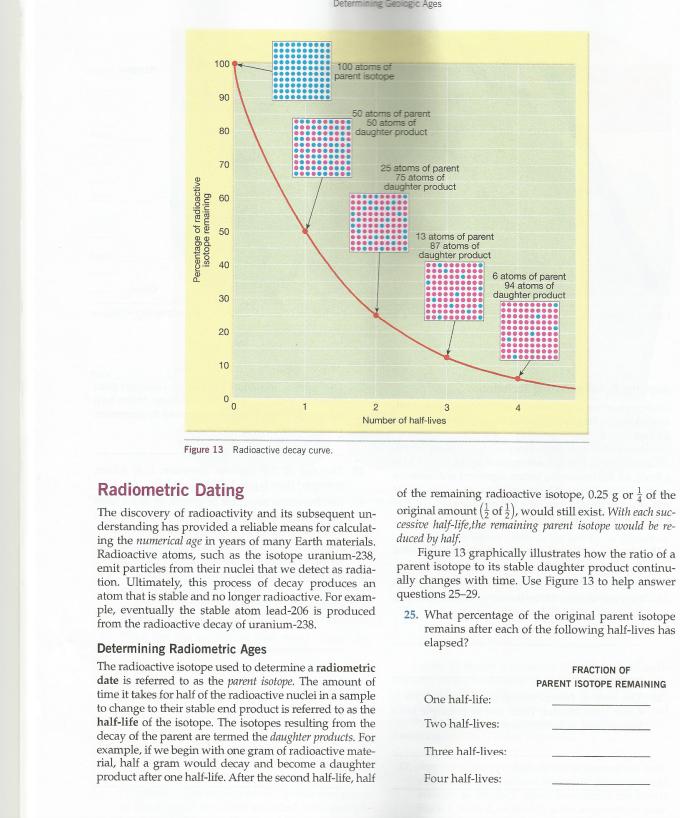Answered step by step
Verified Expert Solution
Question
1 Approved Answer
Percentage of radioactive isotope remaining 100 90 80 70 60 8 6 8 8 8 20 10 0 1 Determining Geologic Ages 100 atoms

Percentage of radioactive isotope remaining 100 90 80 70 60 8 6 8 8 8 20 10 0 1 Determining Geologic Ages 100 atoms of parent isotope Figure 13 Radioactive decay curve. 50 atoms of parent 50 atoms of daughter product Radiometric Dating The discovery of radioactivity and its subsequent un- derstanding has provided a reliable means for calculat- ing the numerical age in years of many Earth materials. Radioactive atoms, such as the isotope uranium-238, emit particles from their nuclei that we detect as radia- tion. Ultimately, this process of decay produces an atom that is stable and no longer radioactive. For exam- ple, eventually the stable atom lead-206 is produced from the radioactive decay of uranium-238. 25 atoms of parent 75 atoms of daughter product 2 Number of half-lives Determining Radiometric Ages The radioactive isotope used to determine a radiometric date is referred to as the parent isotope. The amount of time it takes for half of the radioactive nuclei in a sample to change to their stable end product is referred to as the half-life of the isotope. The isotopes resulting from the decay of the parent are termed the daughter products. For example, if we begin with one gram of radioactive mate- rial, half a gram would decay and become a daughter product after one half-life. After the second half-life, half 13 atoms of parent 87 atoms of daughter product 3 6 atoms of parent 94 atoms of daughter product of the remaining radioactive isotope, 0.25 g or of the original amount (of), would still exist. With each suc- cessive half-life,the remaining parent isotope would be re- duced by half. Figure 13 graphically illustrates how the ratio of a parent isotope to its stable daughter product continu- ally changes with time. Use Figure 13 to help answer questions 25-29. 25. What percentage of the original parent isotope remains after each of the following half-lives has elapsed? One half-life: Two half-lives: Three half-lives: Four half-lives: FRACTION OF PARENT ISOTOPE REMAINING
Step by Step Solution
★★★★★
3.46 Rating (156 Votes )
There are 3 Steps involved in it
Step: 1
what percentage of the original parent isotope remains after each of the following halflives has ela...
Get Instant Access to Expert-Tailored Solutions
See step-by-step solutions with expert insights and AI powered tools for academic success
Step: 2

Step: 3

Ace Your Homework with AI
Get the answers you need in no time with our AI-driven, step-by-step assistance
Get Started


